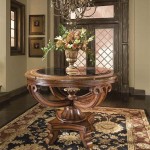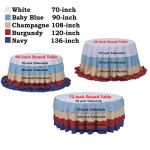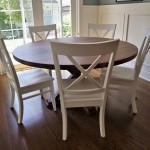The Purpose of Table Setting
Table setting, often perceived as a mere aesthetic exercise, is a practice deeply rooted in etiquette, functionality, and the enhancement of the dining experience. Beyond the visual appeal, the arrangement of cutlery, glassware, and dishes carries significant weight in conveying respect for guests, facilitating the smooth execution of a meal, and contributing to the overall ambiance of the occasion. Understanding the purpose of table setting illuminates its value beyond surface-level decoration, revealing it as a crucial element in hospitality and dining culture.
From casual family meals to formal banquets, the principles of table setting adapt to accommodate the specific context. While the complexity and formality may vary, the underlying principles remain consistent: organization, efficiency, and consideration for the diner. A well-set table anticipates the needs of the guests, providing the necessary tools for each course and allowing them to navigate the meal with ease and grace.
The evolution of table setting reflects changes in dining habits and social customs throughout history. Ancient civilizations, such as the Romans and Greeks, employed rudimentary forms of table setting, often utilizing simple utensils and communal serving dishes. As societies developed and dining became more refined, the practice of table setting evolved in tandem, incorporating new utensils, specialized glassware, and intricate decorative elements.
Facilitating the Dining Experience
One of the primary purposes of table setting is to facilitate the dining experience. The placement of each item is carefully considered to ensure that guests have easy access to the tools they need for each course, without having to search or reach across the table. This thoughtful arrangement contributes to a sense of comfort and ease, allowing diners to focus on enjoying the food and conversation.
The basic table setting typically includes a dinner plate, forks, knives, spoons, and a napkin. The placement of these items follows a logical order based on the course sequence. Forks are generally placed to the left of the plate, with the salad fork positioned furthest to the left if a salad is served first. Knives are placed to the right of the plate, with the cutting edge facing inward, indicating that the blade should not be pointed towards others. Spoons are placed to the right of the knives, with dessert spoons often placed horizontally above the plate or brought out with the dessert course.
Glassware is also strategically placed, with water glasses typically positioned above the knives and other beverage glasses arranged to the right. The type of glassware used depends on the beverages being served, with wine glasses, champagne flutes, and juice glasses each having a specific shape designed to enhance the drinking experience. The arrangement of glassware ensures that guests can easily identify and access the appropriate glasses for the different beverages offered during the meal.
The napkin, a functional and aesthetic element, is typically placed to the left of the forks, under the forks, or on the dinner plate. The choice of placement depends on the formality of the occasion and personal preference. A neatly folded napkin adds a touch of elegance to the table setting and provides guests with a convenient way to clean their hands and face during the meal.
Furthermore, the spacing between place settings is crucial for ensuring comfort and avoiding overcrowding. Adequate space allows guests to move freely, engage in conversation, and enjoy their meal without feeling cramped or restricted. The distance between place settings should be sufficient to accommodate elbows and allow for comfortable arm movements.
Communicating Etiquette and Respect
Table setting serves as a nonverbal form of communication, conveying etiquette and respect to guests. A well-set table demonstrates that the host has taken the time and effort to create a welcoming and hospitable environment. The attention to detail in the arrangement of cutlery, glassware, and dishes indicates that the guests are valued and that their comfort and enjoyment are a priority.
Adherence to proper table setting etiquette shows an understanding of social norms and conventions. The correct placement of utensils, the use of appropriate glassware, and the overall presentation of the table reflect a commitment to good manners and refined social graces. This attention to detail can significantly enhance the perception of the host and the overall atmosphere of the dining occasion.
The use of high-quality tableware, such as fine china, crystal glassware, and polished silverware, further communicates respect and elevates the dining experience. These elements add a touch of elegance and sophistication to the table setting, creating a sense of occasion and demonstrating that the host is willing to invest in the comfort and enjoyment of their guests. The selection of tableware should be appropriate for the occasion, with more formal events warranting the use of higher-end materials.
Moreover, the table setting can reflect the host's personal style and taste. The choice of linens, centerpieces, and decorative accents allows the host to express their individuality and create a unique and memorable dining experience. These personal touches can add warmth and character to the table setting, making guests feel more comfortable and welcome.
In a professional setting, such as a business lunch or dinner, table setting is particularly important for conveying professionalism and attention to detail. A well-set table reflects positively on the company and demonstrates a commitment to providing a high-quality experience for clients and colleagues. This can contribute to building strong relationships and fostering a positive business environment.
Enhancing the Ambiance and Aesthetics
The aesthetic appeal of a table setting plays a significant role in enhancing the overall ambiance of the dining experience. A visually appealing table creates a sense of occasion and contributes to a more enjoyable and memorable meal. The careful selection of colors, textures, and decorative elements can transform a simple table into a work of art, setting the stage for a truly special dining experience.
The choice of linens, such as tablecloths and napkins, can significantly impact the overall aesthetic of the table setting. Linens provide a foundation for the table and can add color, texture, and pattern. A crisp white tablecloth creates a classic and elegant look, while colored linens can add a touch of personality and vibrancy. The texture of the linens, such as linen, cotton, or damask, can also contribute to the overall sensory experience.
Centerpieces, such as floral arrangements, candles, or decorative objects, serve as focal points for the table setting. A well-chosen centerpiece can add height, color, and visual interest to the table. The size and style of the centerpiece should be appropriate for the occasion, with more formal events often warranting larger and more elaborate arrangements. The centerpiece should also be carefully positioned to avoid obstructing the view of guests or interfering with conversation.
Lighting plays a crucial role in creating the desired ambiance for the dining experience. Soft, warm lighting can create a more intimate and inviting atmosphere, while brighter lighting can be more appropriate for daytime meals or casual gatherings. Candles can add a touch of romance and elegance to the table setting, while decorative lighting fixtures can provide ambient light and visual interest.
The arrangement of tableware also contributes to the overall aesthetic of the table setting. The careful placement of dishes, glassware, and cutlery can create a sense of balance and harmony. The use of different shapes and sizes of tableware can add visual interest and create a more dynamic and engaging table setting. The choice of materials, such as china, glass, and silver, can also contribute to the overall aesthetic appeal.
The integration of seasonal elements, such as flowers, fruits, or foliage, can add a touch of natural beauty to the table setting. These elements can reflect the current season and create a sense of connection to the natural world. Incorporating seasonal elements can also add a personal touch and make the table setting more unique and memorable.
Ultimately, the purpose of table setting extends beyond mere functionality. It encompasses the creation of a pleasant and welcoming atmosphere, the communication of respect and etiquette, and the enhancement of the overall dining experience. By understanding the principles and purposes behind table setting, individuals can create memorable and enjoyable dining occasions for themselves and their guests.

Grasping God S Purpose It Time To Set The Table Exodus 37 10 16 Wandering Shepherd

Creating A Great Table Setting Means That Every Item Has Place And Purpose These Easy To Follow Pl Settings Etiquette Dining

Table Setting Wikipedia

10 Summer Table Setting Ideas You Ll Fall In Love With

How To Create Beautiful Table Settings Rustic Folk Weddings

Mood Setting With Your Tableware Luxebook

Table Setting Voary Art

What Is A Charger Plate And How It Used Diane Gottsman Leading Etiquette Expert Modern Manners Authority

How To Buy The Right Tablecloth Or Placemats For Every Table And Occasion Cbc Life

Enhance Your Holiday Table Settings With Charger Plates Madeterra
Related Posts








